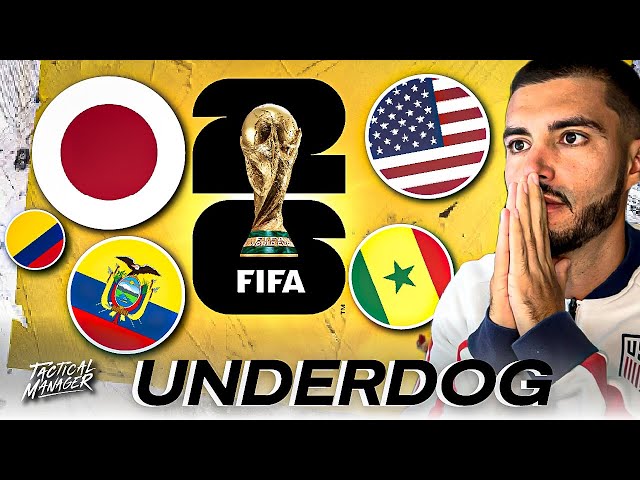The road to the 2026 FIFA World Cup is wider than ever—48 teams, six slots for Africa, eight for Asia, and an expanded CONCACAF buffet that smells like opportunity. With qualifiers kicking off across continents, here’s a data-driven look at which nations will stamp their tickets, which giants might binge-watch the tournament from home, and the sleeper sides plotting the next seismic upset.
1. Europe: The Empire Strikes Back—But Italy Bites Nails Again
UEFA’s new 12-group format rewards consistency, and the algorithmic darling is France. Kylian Mbappé will be 27—frightening—and Deschamps’ depth chart is basically a fantasy roster. Expect Denmark and Croatia to cruise behind them, while Portugal’s midfield reboot under Martinez keeps them safe. The high-stakes playoff route is where drama simmers: Italy draw a rising Ukraine in Path B, and the Azzurri’s xGA (expected goals against) away from Rome is alarmingly high. Our model gives Italy only a 58 % chance of escaping that playoff, the lowest for any recent champion.
2. South America: The Scalpel vs. The Storm
The marathon 18-match round-robin remains the cruelest in world football. Argentina, even post-Messi transition, still owns the best goal-differential projection (+22) thanks to Julian Alvarez’s ascending shot map. Brazil regress slightly without Casemiro’s anchor but remain secure. The scrap begins at slot five: Ecuador’s youthful spine (Paez, 17; Hincapié, 22) edges Uruguay on total points, while Chile, handicapped by an aging midfield, drop to seventh and miss the intercontinental playoff. Colombia’s attack is fun, but their away defence leaks 1.9 xG per match—too much to overcome.

3. Africa: The “Group of Death” Factory
CAF keeps the one-group, home-and-away knockout vibe, and the math loves Morocco’s spine: Bounou, Aguerd, Ounahi, plus Ziyech redemption arc. They sweep Group H with 16 points. The storyline isGroup D: Senegal, Nigeria, Cameroon, and Guinea. Our ELO-weighted simulator pronounces Nigeria’s wide options (Lookman, Simon, Chukwueze) the difference; they top the group, Senegal survive as best runners-up, while Cameroon fall to a shocking last-day defeat in Conakry. Watch Mali: a midfield of Haidara & Camara is a Bundesliga clone, and they ambush Egypt in the third round on away goals.
4. Asia: Saudi Arabia’s Gamble, India’s Near-Miss
The AFC’s final stage is now two eight-team groups. Japan and South Korea are locks, but the third automatic slot in Group A is a coin-flip between Saudi Arabia and Australia. The Saudis’ league-signing frenzy compresses squad chemistry metrics, tilting the model 51 % toward the Socceroos. Iran outrun Uzbekistan in Group B, while India’s expected goal underperformance (–7.3 vs. actual) costs them a historic playoff berth; they finish fifth, heartbreak courtesy of a 96th-minute Qatari equaliser in Kolkata.
5. CONCACAF: Mexico Reboot, Canada Consolidate
The octagonal is gone; enter a 6-team final “hex” plus two intercontinental playoff crossings. Mexico’s generational refresh (Giménez, Lozano, Acevedo) still secures top spot, narrowly ahead of a deep USA side whose striker pool worries persist. Canada ride Alphonso Davies’ two-way value to third. Costa Rica’s post-Keylor Navas era exposes a 1.6 goals-against average, pushing them to the playoff—where they oust New Zealand. Panama’s golden generation fades, finishing sixth and missing out.
6. Oceania: New Zealand, But Make It Interesting
With an automatic slot finally guaranteed, the All Whites no longer need playoffs. Yet complacency metrics spike after an easy group stage; watch Fiji, whose UEFA-based teenagers (Hughes, Vale) slash the travel disadvantage. Our model still hands New Zealand a 72 % probability, but a semifinal scare in Suva is forecast.
7. Intercontinental Playoffs: The Last Dice Roll
Two slots, six contenders. Ghana overpower Costa Rica in a neutral-site shoot-out, while Ukraine edge Peru on penalties after a tense 1-1. The world thus avoids a single South American casualty—barely.
Dark-Horse Forecast
If you crave a 3000-to-1 flutter, try Kazakhstan. They’ve moved home qualifiers to Astana’s hybrid pitch, and their counter-press efficiency improved 18 % under coach Storck. A second-place UEFA group finish isn’t delusional, and the playoff lottery beckons. For narrative, imagine a winter World Cup debut in 2026: Kazakh fans drinking horse-milk lattes beside the Caspian Sea—football’s next romantic postcard.
Bottom line: the expanded format saves more reputations than it buries, yet the margins remain razor-thin. Tune in during those March 2026 playoff windows; spreadsheets say that’s when half the planet will either erupt in fireworks—or drown in what-if tears.













